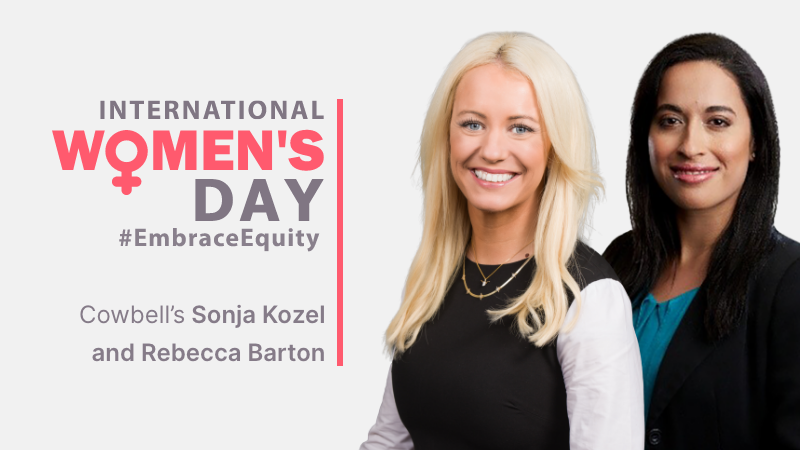This month, Cowbell has reached an exciting milestone: It’s been one year since the first lines of code for our continuous underwriting platform that is behind our cyber insurance product, Cowbell Prime, have been written. For any start-up, the first year is always the most critical, and many don’t get to celebrate this success. To find out more about how Cowbell Cyber started and the technology behind it, we conducted a Q&A with Prab Reddy, Cowbell’s co-founder, and VP of Engineering.
You are one of Cowbell’s co-Founders. Tell us about the path that led you to Cowbell.
Jack Kudale, Cowbell’s Founder and CEO, came to me with this idea over a year ago, at the beginning of 2019. Both of us have been in the cybersecurity industry for a long time, and we wanted to utilize cutting-edge technology to create a brand new product around cyber. This was Jack’s dream for almost a decade. Having a lot of experience in cybersecurity, I knew how much the industry was still growing and the need for even more innovation. It’s a hard business to get into, and there are many technical challenges but it is also very lucrative. The cyber insurance market itself had not yet been disrupted. So I knew that there would be a lot of positive changes that we could bring to this industry.
In your words, what does Cowbell Cyber do, and what makes it so exciting for you?
Cowbell Cyber is a cyber insurance company that analyzes the cyber risk of enterprises by combining inside-out and outside-in data, as well as data from many other sources such as the dark web, and processing that data through our proprietary AI model. Our platform comes with a user-friendly system, where bindable quotes can be generated in 5 simple steps. (Read our Q&A with Shivang to dive into our approach to user experience.)
What makes it exciting for me is how easy we make the process of distributing cyber insurance for agencies, and the way we can provide ongoing value to them, as well as our policyholders. Some cyber insurers don’t interact with agents at all unless there is a claim. Cowbell actively works with agents to understand the policyholder’s cyber risk, while finding ways to help decrease that risk.
Cowbell’s core engineering was hired about a year ago. What was your experience writing the first lines of code for Cowbell?
When we started, we had so many ideas and so much code we wanted to write. We frankly didn’t know where to start. So we began brainstorming and writing down everybody’s ideas and the things that we wanted to do on the wallpaper of our boardroom. From there, we wrote down the entire schedule for the product release, the minimum of what needed to be done, before bringing it all back together to deliver value to insurance agencies.
In 6 months or so (from the Summer of 2019 to Jan 2020), Cowbell’s platform was up and running. Any advice you can share with other entrepreneurs who have similar aggressive goals to get their technology to a usable stage?
In my experience, having worked in various start-ups, the best way to get started is by defining the high-level goals. After they are set, you need to make sure to leave enough room to change and adapt, and for the engineers to do their job. This worked well for Cowbell. We focused on our top-level goals first, and then we added features as we went along.
What’s most important is having the right people. We have been fortunate to be able to build such a great team. Everyone has been of tremendous help. As an entrepreneur, you need to find the right team, but then step back and let them do their job.
Some cyber insurers don’t interact with agents at all, unless there is a claim. Cowbell actively works with agents to understand the policyholder’s cyber risk, while finding ways to help decrease that risk.
Cowbell’s engineering team has three major components to it: front-end, back-end, data science. How do you coordinate the effort of these teams towards a specific release?
From day one, we had clear leaders for each component, and everyone had their own responsibilities. In order for those leaders to work together as effectively as possible, we needed to create a priority list and a schedule that enables the different components to work together with a slight delay. Our engineers don’t have to wait for other components to be completely done. This is the basis for our engineers’ cooperation. There will be some overlap, sometimes code will be overwritten, and sometimes you have to wait a little longer, but that flexibility helps us coordinate everything as effectively as possible.
How often do you release new versions of the Cowbell SaaS platform?
We have an aggressive release cycle. New features are made available to insurance agents and policyholders in our production environment once a week. Our new releases go live with the push of a button, and since we have a microservices architecture, there is almost no downtime for agents. With every update, we also push all the services to bring everything up to date with every new environment created.
We are slowly getting to a complete CI/CD automation model, where whenever one of us finishes a feature, the code automatically goes through the integration process and can show up in the production system right away. We are working towards full automation right now.
Finally, any thoughts on the crisis we’re facing and the requirement for many of us to work from home? Has it impacted your team?
We are very proud of making the decision to stay home early on, just when Alameda county recommended to do so. The nature of our company and the industry we’re in allows us to work from home quite easily, so the company has stayed productive throughout the pandemic. We are all very grateful that everyone is staying safe and healthy.




